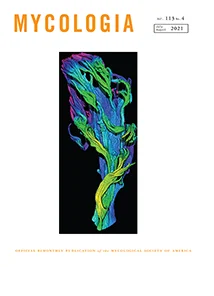Ver ítem
- xmlui.general.dspace_homeCentros Regionales y EEAsCentro Regional Patagonia NorteEEA BarilocheArtículos científicosxmlui.ArtifactBrowser.ItemViewer.trail
- Inicio
- Centros Regionales y EEAs
- Centro Regional Patagonia Norte
- EEA Bariloche
- Artículos científicos
- Ver ítem
Understanding introduction history: Genetic structure and diversity of the edible ectomycorrhizal fungus, Suillus luteus, in Patagonia (Argentina)
Resumen
Suillus luteus is a common ectomycorrhizal (EM) fungus associated with several Pinus species. It is distributed throughout the Northern Hemisphere and has been introduced into South America and New Zealand. We examined the genetic structure and population biology of S. luteus, which was introduced into Patagonian plantations with Pinus species in Argentina. Overall, 106 samples were collected at 11 geographically separated sites (i.e., Pinus plantations)
[ver mas...]
Suillus luteus is a common ectomycorrhizal (EM) fungus associated with several Pinus species. It is distributed throughout the Northern Hemisphere and has been introduced into South America and New Zealand. We examined the genetic structure and population biology of S. luteus, which was introduced into Patagonian plantations with Pinus species in Argentina. Overall, 106 samples were collected at 11 geographically separated sites (i.e., Pinus plantations) along a latitudinal gradient in Patagonia (ca. 38°–46° south latitude). Phylogenetic analyses confirmed placement in S. luteus. Genetic analysis demonstrated moderate within-site genetic diversity, but low differentiation between sites. No clear clusters were detected geographically or in relation to host species of
Pinus. Our results suggest that the weak genetic structure of the species reflects the short time that has elapsed since the introduction of S. luteus into Patagonia, and its expansion with exotic afforestation there. Moreover, the lack of structure is consistent with a founder effect, suggesting the introduction of a small number of genets that spread throughout all the plantations. Therefore,
the high level of gene flow and weak genetic structure observed are probably related to the anthropogenic movement of inoculum associated with forestry practices.
[Cerrar]

Autor
Pildain, Maria Belen;
Marchelli, Paula;
Azpilicueta, Maria Marta;
Starik, Cristian;
Barroetaveña, Carolina;
Fuente
Mycologia 113 (4) : 715-724 (Junio 2021)
Fecha
2021-06
Editorial
Taylor & Francis
ISSN
0027-5514
Formato
pdf
Tipo de documento
artículo
Palabras Claves
Derechos de acceso
Restringido
 Excepto donde se diga explicitamente, este item se publica bajo la siguiente descripción: Creative Commons Attribution-NonCommercial-ShareAlike 2.5 Unported (CC BY-NC-SA 2.5)
Excepto donde se diga explicitamente, este item se publica bajo la siguiente descripción: Creative Commons Attribution-NonCommercial-ShareAlike 2.5 Unported (CC BY-NC-SA 2.5)

